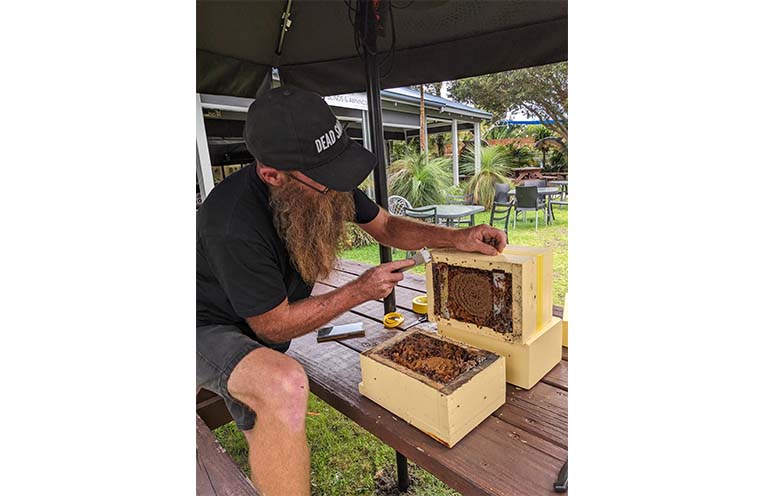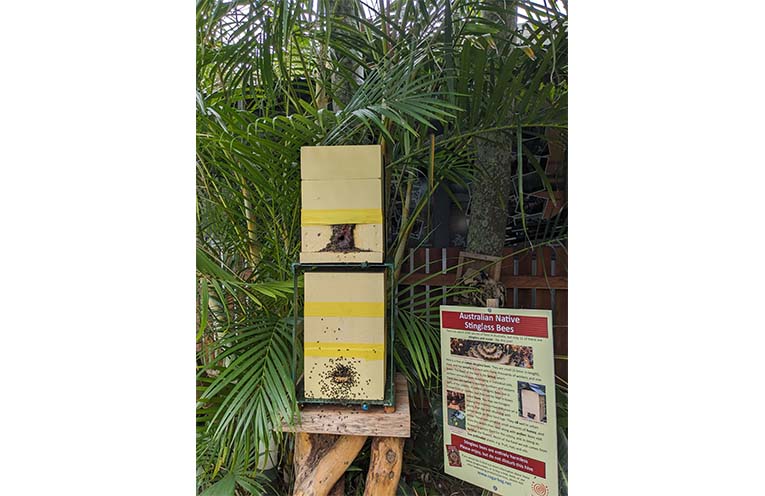
THE native stingless beehive installed at Coffs Coast Wildlife Sanctuary almost a year ago reached a significant milestone last week.
Maintained by the Coffs Harbour branch of the Australian Native Bee Association (ANBA), the beehive was home to a healthy population of Tetragonula carbonaria bees, but had reached capacity.
 Advertise with News of The Area today.
Advertise with News of The Area today.It’s worth it for your business.
Message us.
Phone us – (02) 4981 8882.
Email us – media@newsofthearea.com.au
The organisation agreed it was time for a hive split to ensure the continued growth of the native bee community.
Coffs Harbour ANBA treasurer Ben Hatchard performed the split, with support from secretary Rick Walker.
The hive is divided by separating the top and bottom sections of the box.
The occupied top half is joined to an empty bottom box and the occupied bottom half is joined to an empty top box.
Because there is only one queen in a hive, the box without one will “re-queen” over the coming days.
ANBA Chairperson Elaine Bean told News Of The Area that it was a “textbook” process with the brood split across the advancing front.
“This enabled everyone attending to see the amazing spiral comb and see the queen hard at work in the bottom section.
“We even had a tiny taste of their unique flavoured honey.”
Once the split was completed, the hive with the new bottom and original top was placed back into position at the sanctuary.
The other hive, with the original bottom and new top was taken away to a branch member’s home to recover and rebuild.
This hive will eventually be located in another community setting, providing another educational opportunity around native stingless bees.
The hive serves as a focal point for visitors to learn about the critical role of pollinators in ecosystems.
Tiga Cross, Managing Director of the Coffs Coast Wildlife Sanctuary, expressed her passion for this transformative initiative.
“Our goal has always been to educate and inspire visitors to care for our planet and its inhabitants,” she said.
“While our marine exhibits have been instrumental in achieving this mission, we recognised the need to diversify and expand our offerings to encompass a broader spectrum of environmental issues.
“The addition of the native beehive and sustainable garden allows us to present a more holistic view of sustainability and conservation.”
Ms Bean said the inclusion of the native beehive is a testament to the sanctuary’s dedication to promoting biodiversity and environmental stewardship.
“By showcasing the importance of native bees in our ecosystems, the sanctuary is fostering a deeper understanding of the interconnectedness of all living things.”
By Andrea FERRARI



